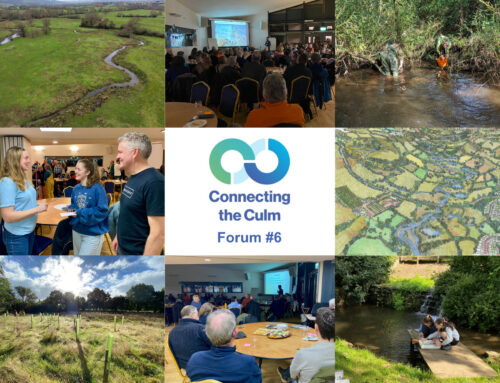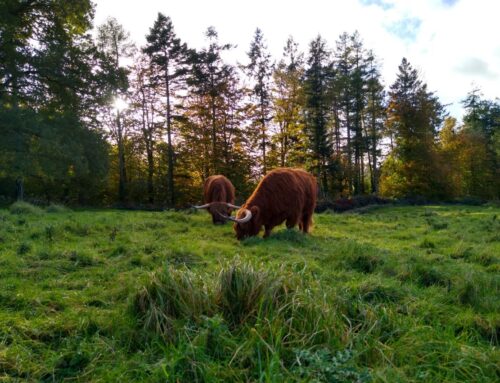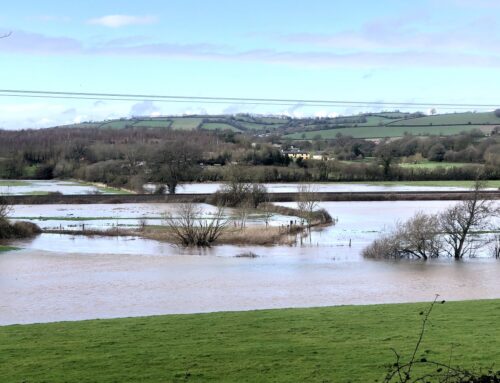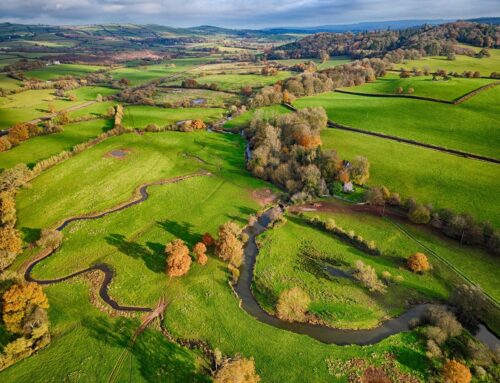Nature-based solutions are techniques to restore or mimic natural functions in the environment, where the human systems we have imposed may be creating undesirable effects. They could be realised in a variety of scales and forms, such as improving soils, planting trees and hedges, and creating features to store and slow down water as it flows through the catchment. We explore below some of these techniques which are particularly relevant for the Culm.
The way we use the term nature-based solutions incorporates a few other terms you may have heard, including ‘working with natural processes’ and ‘natural flood management’.
In the context of this project, we are looking at the River Culm at a whole catchment scale and opportunities to implement nature-based solutions to help us adapt and be resilient to the effects of climate change. In particular, this may involve nature-based solutions which achieve some of the following functions:
- Slow the flow of water through the catchment so there is a smoother and longer response in river level to rainfall higher in the catchment, leading to less risk of flooding downstream
- Infiltrate more water into the ground so it doesn’t create excess runoff and is available within the catchment system over a much longer period of time (in the form of base flow in the river, or groundwater) to reduce the risk of drought
- Create space for wildlife and people so people can connect with and enjoy a richer natural environment and to play a positive role in overcoming the current ecological crisis
There is lots of interest in this area, and it is increasing! There is greater recognition that the business as usual approach to managing flood risk is not fit for purpose, because of the increase in risk resulting from the increased frequency and intensity of extreme weather we are seeing due to climate change. It’s also clear that delivering nature-based solutions has wider benefits and is cost-effective. In response to the floods in the UK in February 2020 there was a lot of media coverage where experts and politicians talked about opportunities for working with nature and at a catchment scale as part of the solution to flood events now and in the future due to climate change.
While hard defences will continue to play a vital role in helping to keep people and places safe, even more important for reducing flood risk in future is managing the flow of water through the environment. And the best way to do that is through natural methods – planting trees to retain water when it rains, restoring artificially straightened rivers to their natural curves to slow the flow of water, making space on land for water to collect there rather than flood communities, creating wetland habitats that hold water and enhance biodiversity“
Sir James Bevan, Chief Executive of the Environment Agency, Feb 2020
What could nature-based solutions look like for the Culm?
| Type | Notes / resources |
|---|---|
| Soils | Restoring the hydrology of soils in the catchment. The Devon and Cornwall Soils Alliance has a lot of information and latest news here. |
| Mires | Protecting and restoring mires in the headwaters to support wildlife and smooth the flow of water through the system over the seasons. The Culm catchment is home to a number of spring line mires which are important hydrological and ecological features. |
| Woodland and hedges | Managing and creating woodland can have lots of benefits including flood risk reduction – see the information from the Woodland Trust here . Something we are looking at as part of this project is the best places to restore hedges and plant trees in locations which help to slow the overland flow of water in flood events. |
| Beavers | the River Otter beaver trial is happening just over the hill from the Culm so this is very relevant to this area. Beavers are a keystone species which were native to this area centuries ago, and they shape the environment around them in ways which have benefits for other wildlife and slowing the flow of water in the catchment. There is news about the findings of the trial from earlier 2020, including information about the approach to managing beavers in the landscape alongside other systems including agriculture, available from the River Otter Beaver Trial site . |
| Runoff attenuation | These can be features to slow the flow of water in the catchment, reduce the risk of surface water flooding and reduce soil erosion. |
| River & floodplain reconnection/restoration | To allow the river to access more of the floodplain during extreme events, where its beneficial to do so, to reduce the downstream flow and flood risk. |
Where can I find out more?
There are lots of useful resources about nature-based solutions. We have summarised some below and will be publishing more information specifically for landowners in the near future.
- Environment Agency: Working with Natural Processes (WWNP) – all documents can be found here – including the full evidence directory (300+ pages), plus appended case studies for different themes.
- Flood hub knowledge hub
- The Beavers Trust
- Soils: DCSA handbook (a large file but great overview of soils issues with local/West Country focus) )
- East Devon Catchment Partnership and the national Catchment Based Approach








Leave A Comment